| Zeitschrift Umělec 2002/4 >> Uniform future (part 2) | Übersicht aller Ausgaben | ||||||||||||
|
|||||||||||||
Uniform future (part 2)Zeitschrift Umělec 2002/401.04.2002 Keiko Sei | theme | en cs |
|||||||||||||
|
Urban Sax and Ya Basta! use similar principles. Tute Bianche, the white overall movement that Ya Basta! is part of, writes: “The white overalls were born as an ironic reference to the ghosts of urban conflict, then they became a tool, a symbol and an open identity made available to the movement. Anybody could wear white overalls insofar as they respected a certain style. One of the typical sound bites was: ‘We’re wearing the white overalls so that other people wear them. We’re wearing white overalls so that we can take them off someday’ Meaning: ‘You don’t have to join any army, white overalls are not our “uniform.” The finger is pointing at the moon, and as soon as the multitudes look at the moon the finger will vanish into thin air. Our discourse is very factual, we are making proposals, the more people will accept them and put them into practice, the less important we will be.’”4
To somebody like me who never understands the separation of art into fine art and applied art, the arena of political manifestation is where I finally see the logic of “applied art,” i.e. what artists are applying and whom they are addressing. The empirical practice of symbolism, presentation and representation, coding and decoding, metaphor and simile, familiarity and distance, a rattling swing between commodity and sublimation, an in-situ battle of the body of “biopolitics”… All there in the atmosphere of festivity. About 2,000 activists are hanging out in an enormous warehouse-cum-aircraft hangar, draped in banners. A troupe of pink samba drummers parade outside in the warm autumn sunshine, followed by a posse of techno pagan line dancers. On what passes for street corners, soapbox politicos are haranguing anyone who’ll listen and the finishing touches are being put to the inevitable giant puppets. Banners fill the warehouse. Psychotherapeutic banners (“Humans! We all have needs”), hallucinogenic banners (“The dragons, green ants, striped possums and huge trees wish you well.”), and the downright mysterious (“I find wood chips to be disgruntling.”)… Ya Basta! appear to be well organized and led by happy Italian pop music. It’s the most joyful group and they have a beautiful manifesto leaflet, so I stick with the “Bastas.” — witness account no. 1 at the convergence center.5 Looking both comical and fierce, Ya Basta! pass inner tubes from their rear guard to the front lines, where they are used to repel the blows of police batons. Occasionally, a baton bounces off the tube into the air. When it is snatched by a Basta!, exuberant cheers: “Assassininos!”… “We are here to represent all the displaced people, all the refugees, all the poor without homes.” A naked man with a dollar bill impaled on his privates raises a victory sign. — witness account no. 2 at Nusle Bridge.6 The procession that wanted to break through the police barricade to get to the congress center, the IMF/WB meeting venue, was divided into three groups: the pink group consisting of moderate neo-liberal groups, the blue group consisting of the Black Bloc, and the yellow group — Ya Basta! — which was to push through the barricade with their puffy overalls. The tactics worked well: they broke through the unprepared police lines and reached the congress center easier than they had expected. I haven’t seen a wide-area photo of this event, but I am sure it would make a very contemporary work of art. A colorful array of different uniforms and group fashions representing today’s social spheres — blue-collar workers and trade unionists, punks, anarchists, ecologists, gays and lesbians, soldiers, and journalists etc7 — would create a strategically organic pattern that circulated around a firm straight line of other uniforms, the policemen. On the left side of the picture would be the palace-like communist-designed congress center, around which representatives of human economic activity, the bankers, anxiously guard the fortress. There has been a rash of recent incidents in Prague involving artists clashing with the police - three in under six months. It started with the scandal over the cancellation of the outdoor projects of the POLITIK-UM/New Engagement exhibition at the Prague Castle and the actions of canceled artists.8 The second event happened at the Academy of Fine Arts (AVU) in Prague where one student put on a critical performance about the current climate at the school.9 The third confrontation was the arrest of the art group Rafani after they set fire to a black and white version of the Czech flag in front of the statue of St. Wenceslas on independence day. All three incidences involved uniforms: David Černý brought a fake policeman to the opening of POLITIK-UM, Tamara Moyzesová used two fake policemen, and the Rafani members were decked out in bleach-white uniforms of their own making. In the incident at AVU, professor and director of the National Gallery, Milan Knížák, publicly stated that the performance was “abuse of a uniform.” Was all of this a coincidence, or have artists suddenly started yearning to be photographed in uniform? And if so, why? A hint to the answer to this question is the fact that all three episodes took place between two major events: the IMF/WB meeting and the NATO summit, both of which turned the city of Prague into a police state. Therefore, my rather wishful assumption tells me that artists might be reacting to what’s in the air. Or artists, after over a decade of democracy, might have started to reassess the position and role of the artist in society by arranging permutations and combinations of themselves wearing different uniforms. Then, in this mathematical game, the “special train police” and the Rafani art group are a perfect match, in the sense that neither is able to explain why they were wearing the particular uniform they had on. The “special train police” was a fictional profession created specifically for the IMF/WB meeting and featured a man wearing a makeshift, unimaginative uniform. Whereas the Rafani uniforms didn’t function in the artistic narrative they created as a method of communicating with the audience. In other words, the mathematical juxtaposition of the state police uniform and the slick uniforms of the art group is not enough to pull people onto the side of the artists, who, supposedly, were to represent freedom of expression and freedom itself. More on the uniform or uni-form. There are activists and theorists who are working on the flux notion of the uniform, including Wu Ming, a collective of leftist activists and writers based in Italy, and their mentor Subcommander Marcos. For them, the uniform is the beginning, and their long struggle starts from there. They design a standard outfit that will embody their philosophy of strife. In order to make it as transient as possible they refuse to call it a uniform, and when the struggle is over they merge with the general public.10 Hence these regimentals could be called something like a “multitude form of path.” And diversions from this might lead to other group outfits, like “metaform,” to borrow a term coined by the Catalan Richardo Bofill11, whose architectural projects worldwide suggest that the self-changing process is crucial for revitalizing a public space in an urban environment. This leads us to the pleasure of imagining a design for artist regimentals. The design should visualize the quintessence of what they do, something that will make them stand out among people, and something that is destined to change. This text was written shortly before the NATO summit in Prague. Once again, just as was done for the IMF/World Bank meeting, the Czech Ministry of Interior released a Ten Commandments statement to its citizens, in which No. 7 reads as follows: “Passive Resistance Is Better Than Discussion with a Radical Person. Don’t let yourself get carried away by discussion on the street. Fanatic, radical, and extreme thinking people can never be persuaded to change their minds.” So let’s consider this statement. If you don’t argue with someone, how can you ever know if he or she is a fanatic, radical or extreme person. And you will you never find out if he or she can be persuaded or not. Hence, this statement encourages citizens to judge others according to their clothing, or in other words, the statement promotes a kind of “garmentism,” and, in wider sense, even “designerism.” To a certain extent, we all practice this one way or another. I must confess that I did it myself on the IMF/WB train. Yet now, after 9.11, this practice, together with racism, is officially and grossly carried out by law enforcement agencies and mass media worldwide. Artists, who embrace the problem of representation on a daily basis, are not going to be set free for any length of time. Clause No. 6 is another masterpiece: “Watching Is Not Without Risk. Avoid groups wearing eccentric or different outfits.” Harun Farocki’s video Eye/ Machine at Mücsarnok brings us full circle. It points out the problem of wars today using precision guided missiles. Voiceover commentary in the video explains that what was brought into play in the Gulf War “was not new weaponry, but rather a new policy on images” since “it was impossible to distinguish between the photographed and the (computer) simulated images [of the precision guided missiles hitting the target].” And “the loss of the ‘genuine picture’ means the eye no longer has a role as historical witness.” War has thus become a “Watching Without Risk” activity. In his meticulous book Virtual War: Kosovo and Beyond (2000) on the RMA (Revolution in Military Affairs: postmodern warfare of clean, risk free, computer guided weapons), Michael Ignatieff quotes Yale legal philosopher Paul Kahn who says that “riskless warfare in pursuit of human rights” is a moral contradiction. “The concept of human rights assumes that all human life is of equal value. Risk-free warfare presumes that our lives matter more than those we are intervening to save.” The Kosovo war was indeed the success story of NATO’s guaranteed risk-free war. Clausewitz would have called Kosovo a cabinet war. … “It was fought in VTC [video teleconference] rooms, using target folders flashed up on a screen, and all that a commander like [General Wesley K.] Clark ever saw of the rush of battle was the gun camera footage e-mailed every night on secure internet systems to his headquarters in Belgium. Cabinet wars are fought and won by technicians and Clark’s team produced a virtuoso display of technical improvisation. Cabinet wars do not end with parades, garlands, civic receptions or sorrowful ceremonies at graveyards. They do not reach deep into the psyche of a people; they do not demand blood and sacrifice and they do not reward their heroes.”12 And as Clark himself puts it, “this was the only air campaign in history in which lovers strolled down river banks in the gathering twilight and ate at outdoor cafes and watched the fireworks.”13 NATO offers the world the most up-to-date and devastating post cold war technology of warfare, allowing cuddling lovers to watch the destruction of the nerve center of a city without worrying about being hit. At the same time, any army commander would tell you that the battle on the path of leftist extremists is extremely dangerous. These same commanders now come in uniforms which no longer have any practical use; they don’t even have a pocket to hold a flashlight and knife. Thus, the uniform is becoming a pure symbol of power, technological supremacy and territorial — the territory that the power of the uniform can be applied to — sovereignty. So what can an artist do about it? Prague, November 2002 Report from the NATO summit — November 21, a friend was walking through the deserted city center of Prague. Feeling hungry, he went into one of the boarded up KFC restaurants. Upon stepping into the restaurant he realized that the only customers eating there were policemen. So he ate a piece of chicken in this rather surreal environment. After he stepped out of the restaurant back into the street he was immediately ambushed by flashes, photo and video cameras. Journalists had been waiting all day for any non-uniformed person to eat in any of the American fast food chains. He was the first non-uniformed customer. Celebration. Notes: 1. One of the two non-violent counter-summits organized by INPEG (Initiative Against Economic Globalisation) on Sept. 26. The smaller summit was held on Set. 24. 2. In recent years the Black Bloc has emerged to become a visible force of the new leftist movement. However there is no clear definition or consensus about what exactly it is, and critical opinions differ. Some call it fashion and some call it tactics. Some see it as the avantgarde of the political movement, and the others see it as a dangerous element of peaceful protest. One of the more accurate descriptions can be found in a letter from Inside the Black Bloc by Mary Black: I’m part of a loosely affiliated international group of individuals known as the Black Bloc. We don’t have a party platform, and you don’t have to sign anything or go to any meetings to join us. We show up at all kinds of demonstrations, from actions to free Mumia Abu Jamal, to protests against the sanctions in Iraq, and at just about every meeting of international financial and political organizations, from the WTO to the G8. Although most anarchists would never wear black bandanas over their faces or break windows at McDonald’s, almost all of us are anarchists… The Black Bloc is a fairly recent phenomenon, probably first seen in the U.S. in the early 1990s and evolving out of protest tactics in Germany in the 1980s. The Black Bloc may be in part a response to the large-scale repression of activist groups by the FBI during the 1960s, 1970s and 1980s… Although there is no consensus among us on what we all believe, I think I can safely say that we have a few ideas in common. The first is the basic anarchist philosophy that we do not need or want governments or laws to decide our actions. Instead, we imagine a society where there is true liberty for all, where work and play are shared by everyone and where those in need are taken care of by the voluntary and mutual aid of their communities. Beyond this vision of an ideal society, we believe that public space is for everyone. We have a right to go where we want, when we want and governments should not have the right to control our movements … [July 25, 2001 Alternet at Los Angeles Independent Media Center 2001-2002 Original article is at http://la.indymedia.org/news/2001/07/8871.php Communique From NYC-Ya Basta! and NYC-DAN In Genoa by NYC-Ya Basta! & NYC-DAN, Monday July 23, 2001 Mont 10:30 AM “Concerning the attack on the Independent Media Center and Fascist/police coordination during the G8 Summit” 4. Wu Ming I, “Tute Bianche: The Practical Side of Myth-Making (in Catastrophic Times)” GIAP/digest at www.wumingfoundation.com 5. “Five days that shook the IMF” by Arthur Neslen ‘Now’ Sept 28-Oct 4th issue 6. “The Promise of Prague” by Lenora Todaro, Village Voice October 4-10, 2000 7. It’s possible that fascists were there too, but not in uniform. 8. Canceled projects included the activist art group PodeBal’s work dealing with the issue of Sudeten Germans. (After Word War II, the Sudeten Germans were forced from the country.) The group planned to make balloon balls covered with photos of the expelled Sudeten Germans and their confiscated property and float them around the castle square with a banner “Zimmer Frei” on the castle wall. PodeBal, Martin Zet and David Černý, all of whom had outdoor projects canceled, went ahead and performed their projects on opening day. Private security guards at the castle chased PodeBal’s balloons around the square. David Černý sneaked a fake policeman into the opening. The incident was reported in almost every major newspaper in the country and became a high-profile media event, creating debate about the freedom of expression, the state of Prague Castle administration and the Presidential Office, as well as the role of art in society. 9. Prior to the school board’s election of a new director, when all the professors and the administrative board were busy making politics and stabbing each other in the back, AVU student Tamara Moyzesová erected a fence around the school on the first day of the new school year. Two imposter policemen stood at the entrance asking professors and students to sign a paper stating that he or she was entering the building at his or her own risk, as an unknown virus had contaminated the building. Some professors called the real police, and a clash ensued between the imposters, the real police, and professors who were for and against the performance. 10. Tute Bianche is removing their white overalls: “Luckily enough, we decided to call it quits and take off the overalls just before Genoa, for it had become an identity feature and we wanted to merge in the multitudes… Had the white overall really been a ‘uniform’ we’d have many more Giulianis to cry for.” Wu Ming I, “Tute Bianche: The Practical Side of Myth-Making (in Catastrophic Times)” 11. The word was used when he was asked by a Japanese magazine how he can grasp the force and potential of a new place wherever he goes, to which he replied that he needed the “metaform.” 12. Michael Ignatieff, Virtual War, Vintage 2001. Paul W. Kahn’s quotation from “War and Sacrifice in Kosovo,” Philosophy and Public Policy, 19, Spring/ Summer 1999. 13. ibid.
01.04.2002
Empfohlene Artikel
|
|||||||||||||
|
04.02.2020 10:17
Letošní 50. ročník Art Basel přilákal celkem 93 000 návštěvníků a sběratelů z 80 zemí světa. 290 prémiových galerií představilo umělecká díla od počátku 20. století až po současnost. Hlavní sektor přehlídky, tradičně v prvním patře výstavního prostoru, představil 232 předních galerií z celého světa nabízející umění nejvyšší kvality. Veletrh ukázal vzestupný trend prodeje prostřednictvím galerií jak soukromým sbírkám, tak i institucím. Kromě hlavního veletrhu stály za návštěvu i ty přidružené: Volta, Liste a Photo Basel, k tomu doprovodné programy a výstavy v místních institucích, které kvalitou daleko přesahují hranice města tj. Kunsthalle Basel, Kunstmuseum, Tinguely muzeum nebo Fondation Beyeler.
|



















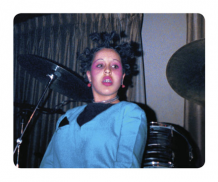




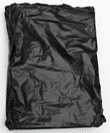
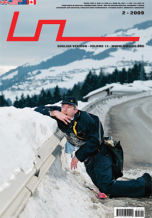
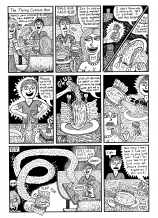
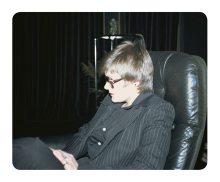


 Potsdamer Str. 161 | Neu Divus in Zwitschermaschine, galerie und buchhandlug in Berlin! | Mit U2 nach Bülowstraße
Potsdamer Str. 161 | Neu Divus in Zwitschermaschine, galerie und buchhandlug in Berlin! | Mit U2 nach Bülowstraße
Kommentar
Der Artikel ist bisher nicht kommentiert wordenNeuen Kommentar einfügen